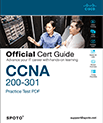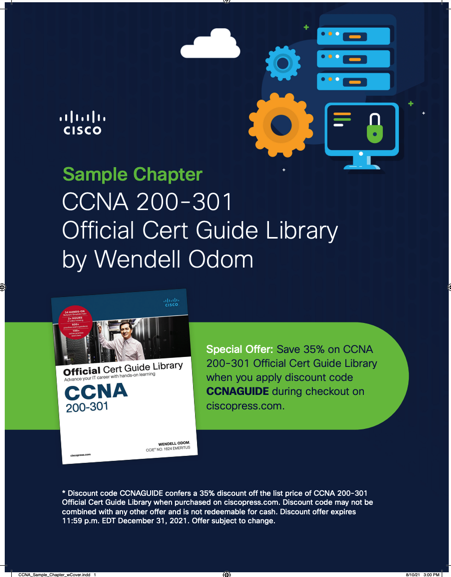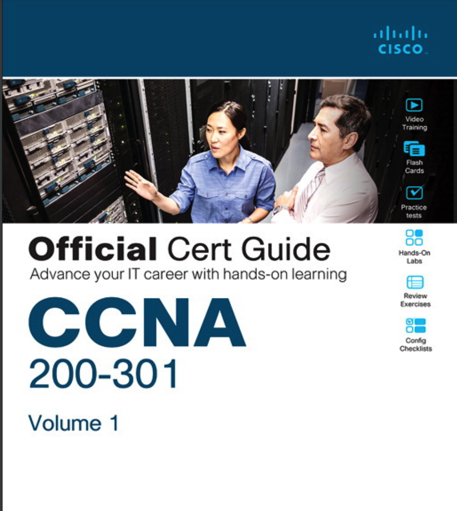Exclusive Courses | Cisco CCNA 200-301 Route Tutorial
Classes of Route - Study CCNA at SPOTO Learning
- Experienced instructors with industry expertise
- Access to official guides and materials
- Covers all exam topics thoroughly
- Flexible study at your own pace
- Support for exam service
- Anytime access to study resources
What you'll learn
Training Course Outline
CCNA CCNA 200-301 Route
1. Using Anki Flashcards
2. Packet Tracer Introduction
3. Interfaces and Cables
4. Connecting Devices
5. OSI Model & TCP/IP Suite
6. OSI Model
7. Intro to the CLI
8. Basic Device Security
9. IPv4 Header
10. Static Routing
11. Configuring Static Routes
12. Troubleshooting Static Routes
13. Dynamic Routing
14.My CCNA 200-301 exam experience: What's my score??
15. Floating Static Routes
16. RIP & EIGRP
17. Configuring EIGRP
18. OSPF Part 1
19. Configuring OSPF (1)
20. OSPF Part 2
21. Configuring OSPF (2)
22. OSPF Part 3
23. Configuring OSPF (3)
Training Options
Self Paced Learning
- Lifelong access to high-quality content
- Curated by industry experts
- Customized learning progress
- 24/7 learner assistance and support
- Follow the latest technology trends
Exam Dump
- 100% Real Exam Practice Tests
- 100% Verified Exam Questions & Answers
- 100% Guarantee Passing Rate
- Average 7 Days to Practice & Pass
Description
The prep course provides hands-on training with core topics of IP Address. Level up your career in IT with this video-based online training course designed to help you master foundational networking knowledge-IP Address and succeed on the CCNA 200-301 exam.
Pre-requisites
Basic understanding of Networking devices Any server knowledge/ already CCNA will be an adantage but not cumpulsory

CCNA 200-301 Practice Test PDF
SPOTO Free CCNA 200-301 Practice Test PDF. 100% Valid CCNA Exam Questions and Answers from Real Exam.

CCNA 200-301 Official Cert Guide
When preparing for your certification exam, use the CCNA 200-301 Official Cert Guide Library—the only self-study resource approved by Cisco.

CCNA 200-301 Official Cert Guide Library
CCNA 200-301 Official Cert Guide Library is a comprehensive review and practice package for the latest CCNA exam and is the only self-study resource approved by Cisco.
Overview of CCNA 200‑301 Route
What is CCNA 200‑301 Route?
“CCNA 200‑301 Route” encompasses the skills and knowledge needed to set up and manage routing protocols on Cisco devices, as tested in the CCNA 200‑301 exam. It covers a range of topics, from basic IP addressing and subnetting to both static and dynamic routing techniques, ensuring effective traffic management across different network segments.
What are the fundamental routing concepts covered in the CCNA 200‑301 exam?
The exam expects a solid grasp of core routing principles. This includes understanding how IP addressing and subnetting work, interpreting routing tables, and recognizing the decision-making process routers use to forward packets based on destination IP addresses.
How is static routing addressed in the CCNA 200‑301 Route section?
Static routing involves manually configuring routes in the network, which is suitable for simpler or more stable topologies where the connectivity remains fairly consistent. This approach is covered to ensure you know how to set up fixed paths that don’t rely on dynamic protocol updates.
Which dynamic routing protocols are emphasized in the CCNA 200‑301 exam?
The exam focuses on several key dynamic routing protocols such as RIP (Routing Information Protocol), OSPF (Open Shortest Path First), and EIGRP (Enhanced Interior Gateway Routing Protocol). You'll learn how to configure these protocols and troubleshoot issues, ensuring that network traffic is directed efficiently and adaptively.